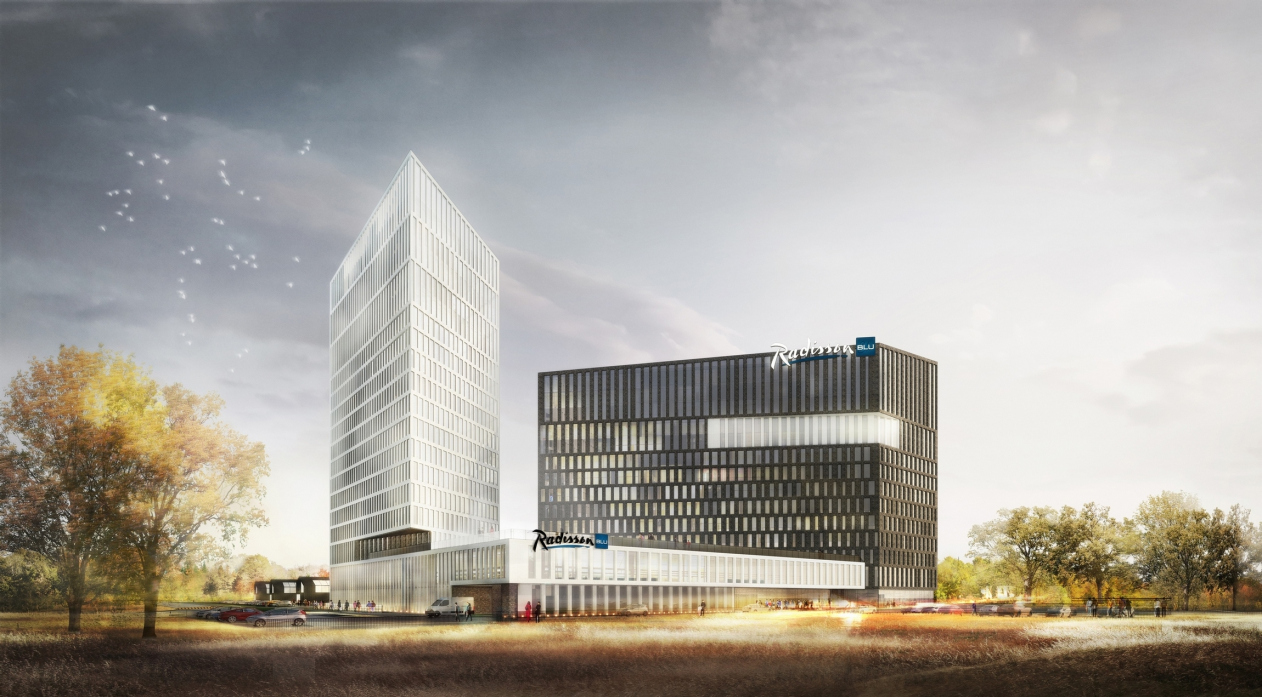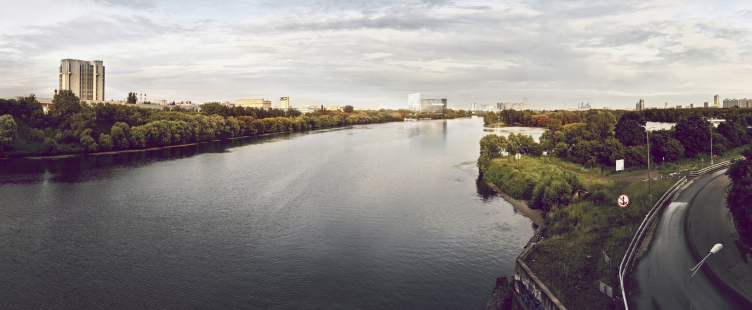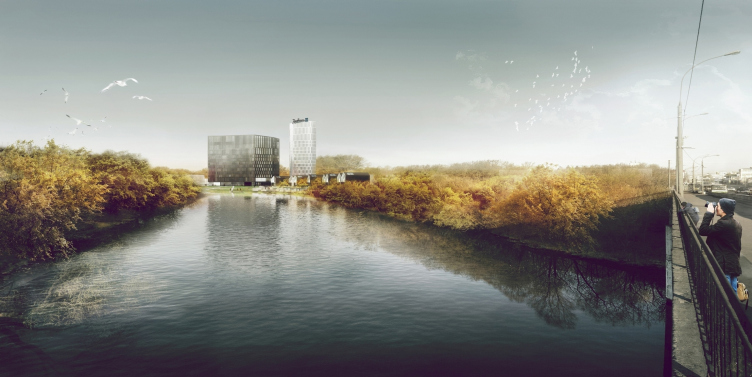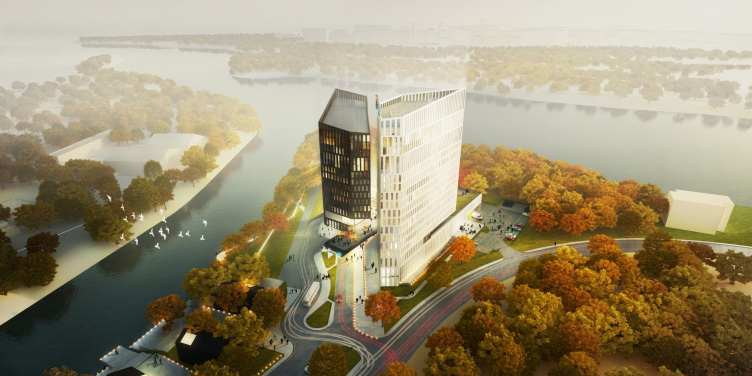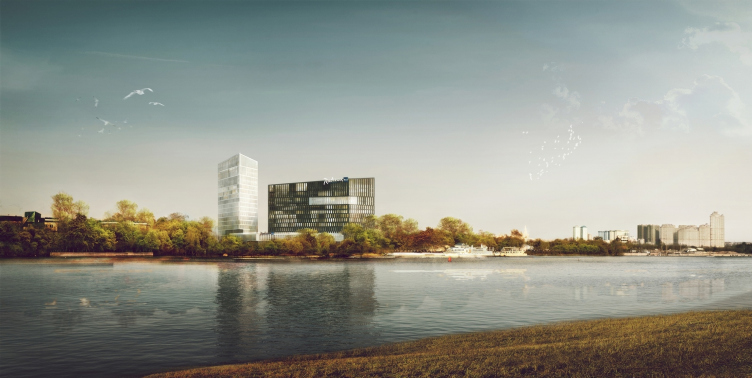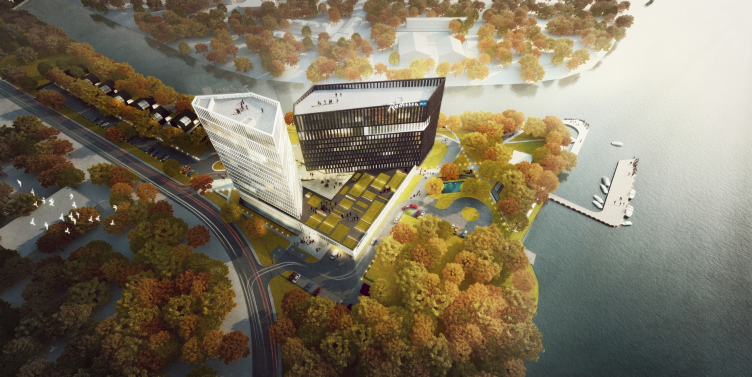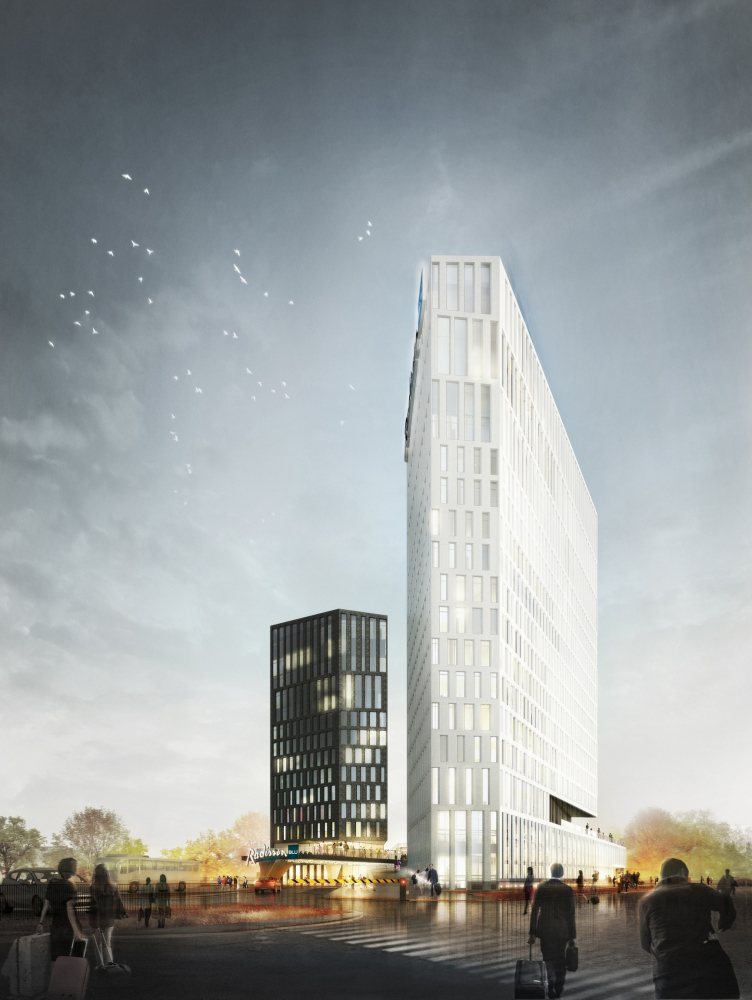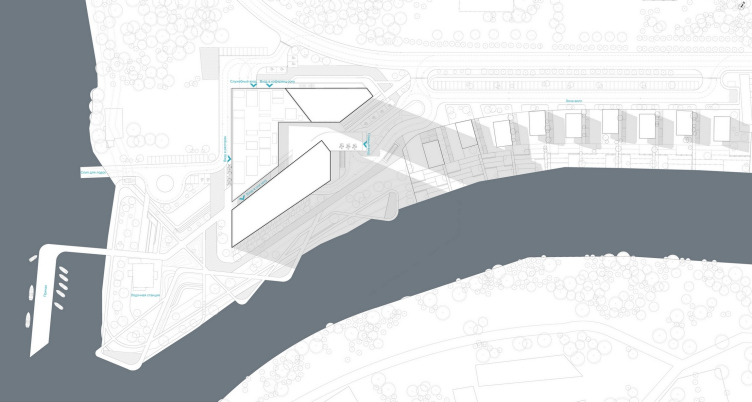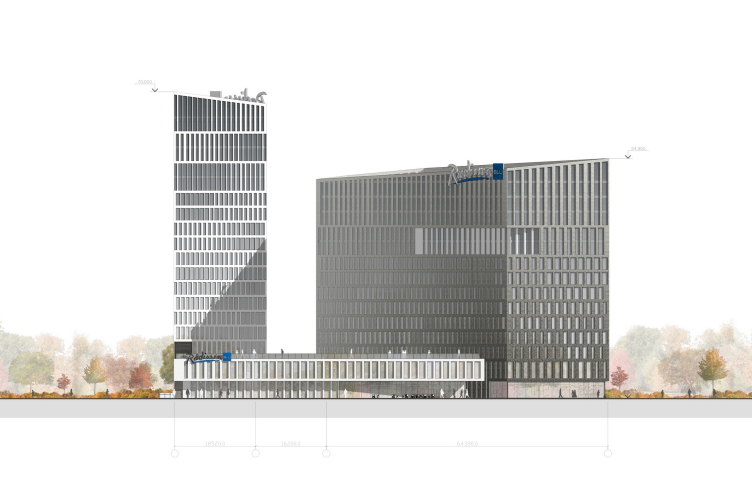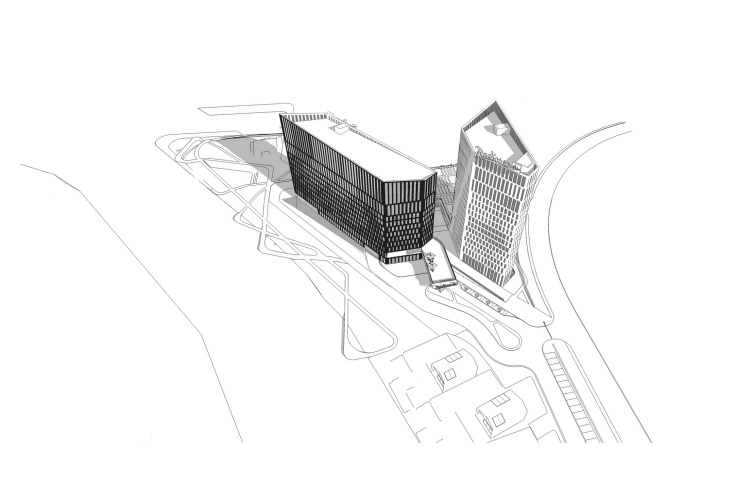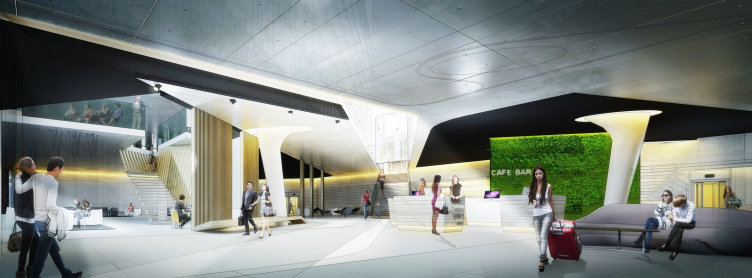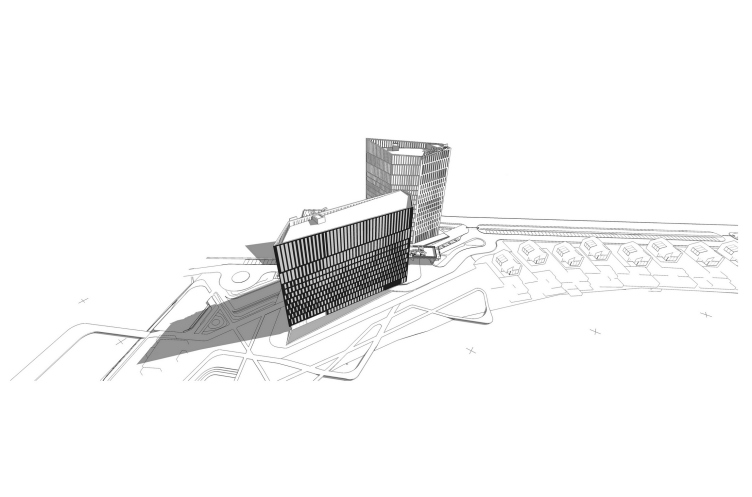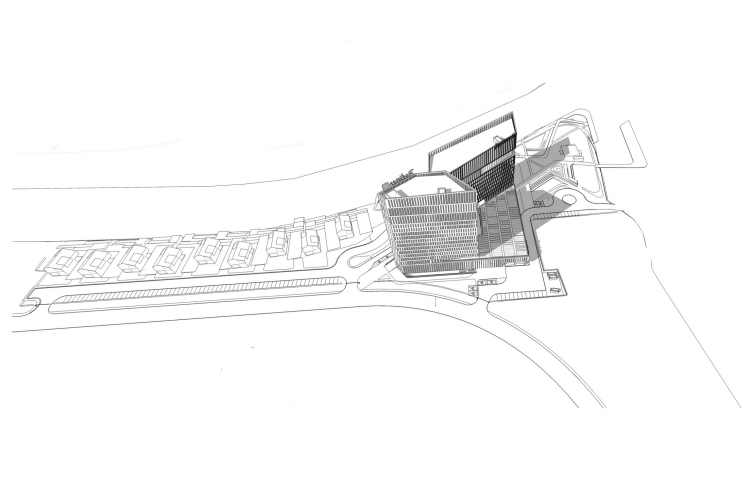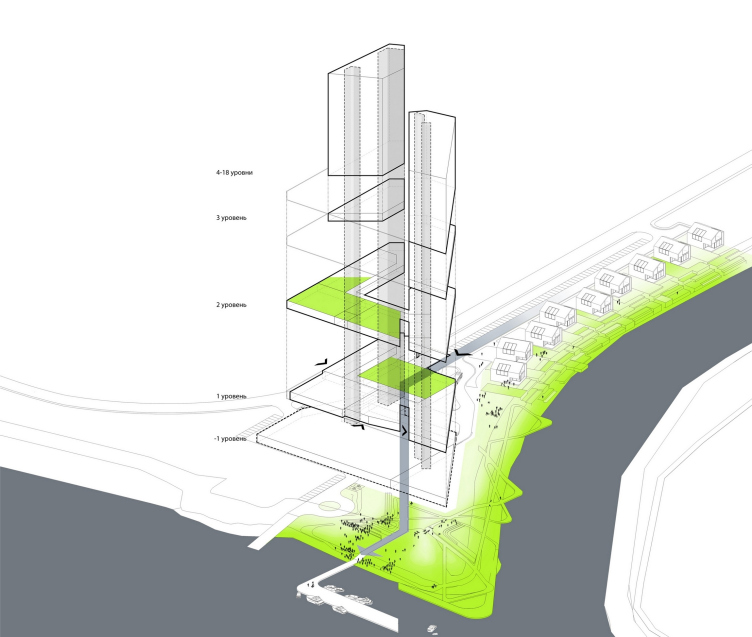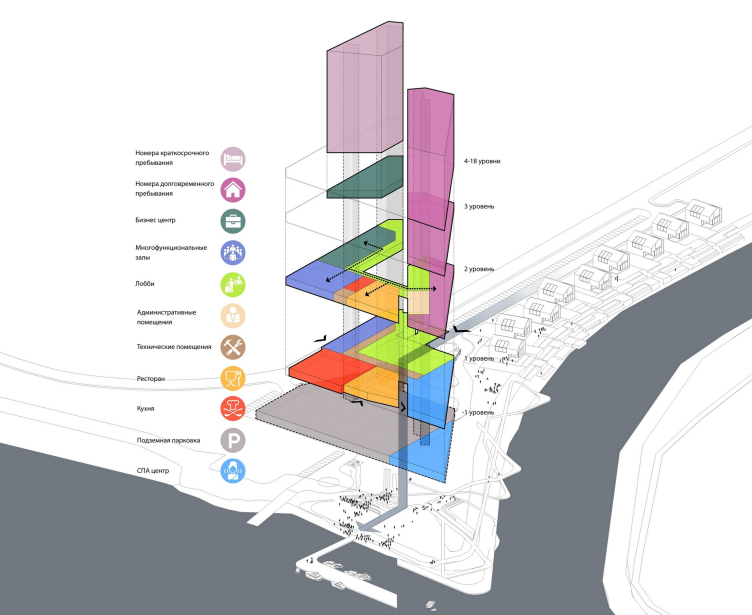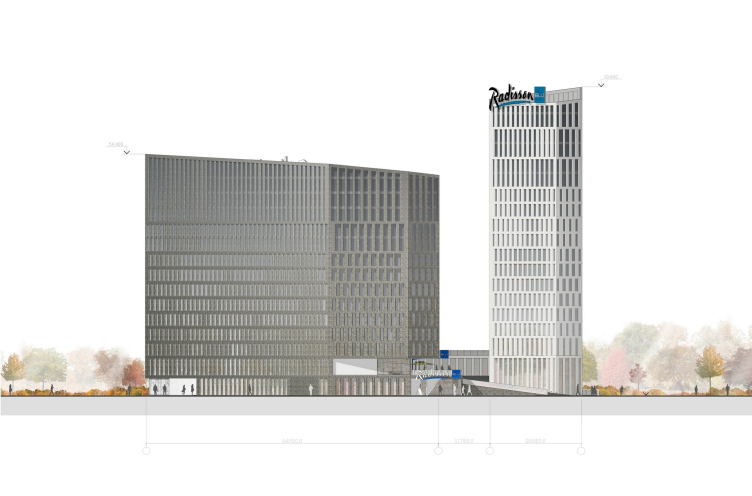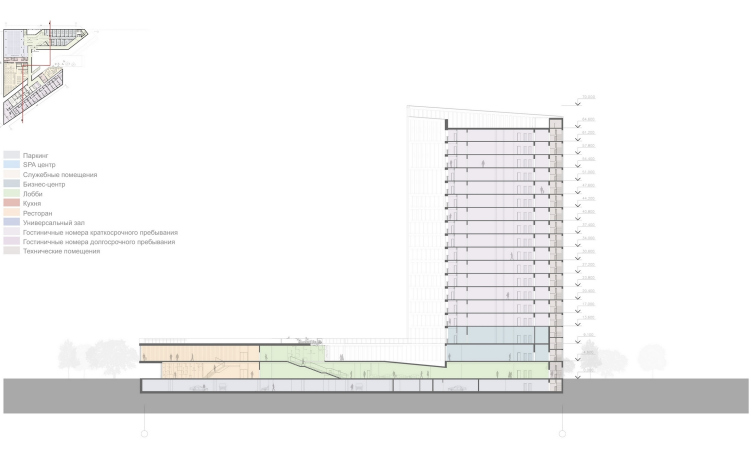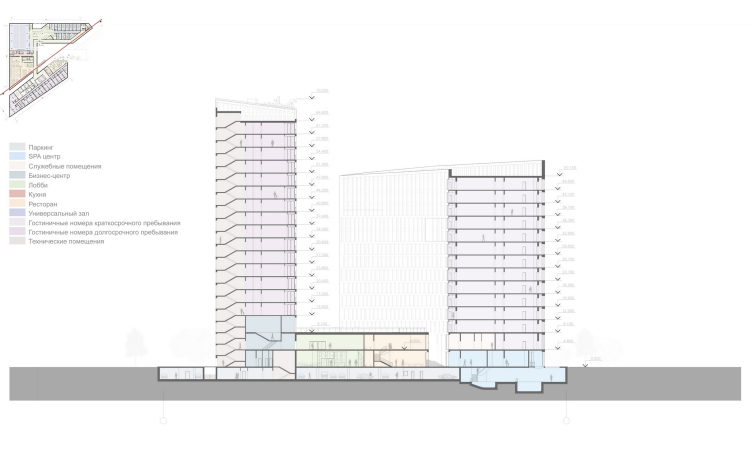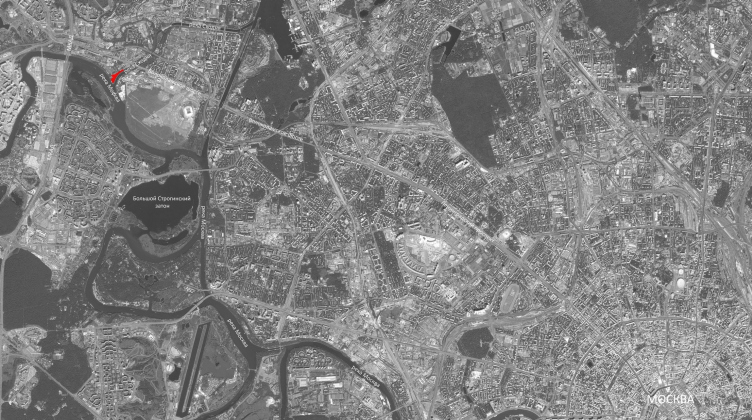The future hotel complex Radisson Blu whose best proposal contest results were announced on the 20th of August, found itself in the focus of several highly vital vectors of today's urban development: first of all, it is about a waterfront territory, second of all, about converting a former industrial park (in this case - the territory of Moscow plant of building materials), third - the very location of the land site imposes high obligations on the architects: at the cape of the Moskva and the Skhodnya rivers, surrounded by the picturesque scenery with really few buildings around. With regard to all of the above, Moskomarchitecture advised the customer to "use the most effective tool - the open contest". Out of the 70 works submitted by 36 creative teams, three projects were ultimately shortlisted. Then the judging panel awarded the first place to the concept by Sergey Oreshkin.
Just as the majority of the Saint Petersburg architects, the team of "A.Len" has been through the "toughening course" of designing under the most rigorous town planning restrictions one could possibly think of - when each and every project of a more or less significant height is thoroughly analyzed in terms of its superposition on the city's every axis and distant panorama. This is why they like nobody else work with perspectives - long and very long, five to seven kilometers long. In this case, this ability came in particularly handy (and, quite possibly, became one of the corner stones of the project's success) due to the fact that this particular hotel complex of Radisson Blu must become the tallest building for miles around and it's going to be seen from some really distant points including such busy highways as Volokolamsk Highway and Moscow Ring Road. At such distances, it is basically only the silhouette that works, or, two silhouettes, to be more exact, one taller and one longer that interact with one another in a complex way: depending on a specific viewing point, they overlap in different ways forming a new picture each time.
Contest project of Radisson Blu Moscow Riverside Hotel&SPA © "A.Len" architectural studio
Contest project of Radisson Blu Moscow Riverside Hotel&SPA © "A.Len" architectural studio
Contest project of Radisson Blu Moscow Riverside Hotel&SPA © "A.Len" architectural studio
Contest project of Radisson Blu Moscow Riverside Hotel&SPA © "A.Len" architectural studio
As one gets closer to it, the building "grows"; its details start showing through, and at middle distances it is the facades that are the main heroes of the play, these facade being something that the authors paid particular attention to while they were working on the project. As the main idea, the architects use the effect of optical illusion - because of the virtually invisible change of the width of the spaces between the windows, and thanks to the combination of differently darkened materials, a "vibrating" effect is created, a feeling that the air "congeals" around the building in a mother-of-pearl gradient. First time around, A.Len tried and tested these "parametric" technologies in their recent project of an elite residential quarter in the city of Ufa: just as here, the "vibrant" facade with pylons of varying height - of one or two floors - upon a rough, to the point of brutal, volume. In the project of Radisson Blu Moscow Riverside this effect is still more strengthened by the color solution of the facades: when an imposing mass of mother-of-pearl whiteness competes with its black counterpart, and the whole thing glitters, moves, and breathes - this looks really beautiful.
Contest project of Radisson Blu Moscow Riverside Hotel&SPA © "A.Len" architectural studio
Contest project of Radisson Blu Moscow Riverside Hotel&SPA © "A.Len" architectural studio
There is yet another construction element that is designed to work for the middle perspective in both of the buildings, although at different levels: the horizontal rectangular cutaways that from a distance look like windows in the stone wall. In the black building this cutaway will be white, and in the white building it will be black, as if the antagonist volumes are catching reflections of one another, thus demonstrating that they are of the same flesh and blood. And, while in the squatting dark building this "light window" is situated closer to the upper part, the soaring white volume looks indeed like it is "taking off" it's stylobate thanks to the cut away quadrant, easing the visual tension in the point of the junction of the vertical and horizontal volumes.
The roof of the stylobate supports two volumes and can be accessed by a ramp - a bus of tourists can easily drive in here, for example - as well as by a long diagonal stairway designed in such a way that an impatient guest can, directly from the driving entrance, have the opportunity to ascend directly to the "cleavage" between the two volumes commanding the view of the cape between the Moskva and the Skhodnya - meaning, to the main vantage point of the ensemble. Along the entire perimeter of the stylobate, Sergey Oreshkin designed a lobby gallery that provides access to all the major zones of the complex: the hotel part, the apartments, the business center, the restaurant (also two-level, and, of course, with panoramic views), and the spa. And the guests are met downstairs, on the first floor, where, besides the reception area, there are also cafes and a lounge.
Contest project of Radisson Blu Moscow Riverside Hotel&SPA © "A.Len" architectural studio
Contest project of Radisson Blu Moscow Riverside Hotel&SPA © "A.Len" architectural studio
Contest project of Radisson Blu Moscow Riverside Hotel&SPA © "A.Len" architectural studio
On the plan, both volumes are irregular polygons, one elongated, and the other having almost a trapeze shape. Together with the different height (the height difference between the units is about twenty meters) and contrasting colors, such solution accentuates the separation of the functions: it is planned that the dark building will contain the long-stay apartments, while the white one will consist of regular hotel rooms. The diagonal corridor between these two - the visual axis of the ensemble - completes this dichotomous picture. As Sergey Oreshkin shares, the only thing that came as a surprise to the hotel operator was the proposal to place the long-stay unit closer to the river - i.e. in the more prestigious location. The architects were able, however, to persuade the customer that it made more sense positioning the apartments in this place, more secluded. As far as the hotel block is concerned, it does not lose anything in terms of its sightseeing properties: thanks to the well though-out plans and specially designed visual axis, almost 100% of the premises (it is only the elevator chutes that look away from the river) command the view of the water. However, even considering this circumstance, it will make sense for the future guests of the hotel to go up on the roof that the authors of the project are planning to encircle with a parapet of "breathing" height: at some places it is as low as a railing and at some places it turns into a tall "mini-Stonehenge", putting the landscape into a rectangular frame, each time, according to Sergey Oreshkin, slightly different. Of course, such parapets also work great with the perspective adding extra intrigue to the silhouette of the complex.
Contest project of Radisson Blu Moscow Riverside Hotel&SPA. Master plan © "A.Len" architectural studio
Contest project of Radisson Blu Moscow Riverside Hotel&SPA. Facade © "A.Len" architectural studio
Contest project of Radisson Blu Moscow Riverside Hotel&SPA © "A.Len" architectural studio
The "A.Len" are experienced "hotel builders": the bureau's portfolio has in it about a dozen hotels, three of them - the ones in Yaroslavl, Novosibirsk, and Kazan - belonging to the brand Park Inn that is run by the same operator as Radisson Blu. So, nothing in this project is accidental, and the separating the functions in the two major units is conditioned by the architects' knowledge of the specifics of the object: because in the case of hotels vertical communications are generally more effective than the vertical ones, the hotel room stock, proceeding from the optimum values of the length of the corridor for the work of the hotel staff, will be housed in the taller and narrower building, while the apartment zone (that requires less service maintenance) allows for a longer path from the elevator to the apartment door. Furthermore, it turned out that all the proposals on arranging the driving entrances and the internal communications that are there in the "A.Len" project, are really close to what the customer had in mind so these parts of the project will require the least possible fine-tuning. Which, of course, could not help but win the judging panel over and - together with the dramatic architectural image - brought the project the ultimate victory in the contest.
Contest project of Radisson Blu Moscow Riverside Hotel&SPA. Interior © "A.Len" architectural studio
Contest project of Radisson Blu Moscow Riverside Hotel&SPA © "A.Len" architectural studio
Contest project of Radisson Blu Moscow Riverside Hotel&SPA © "A.Len" architectural studio
Contest project of Radisson Blu Moscow Riverside Hotel&SPA © "A.Len" architectural studio
Contest project of Radisson Blu Moscow Riverside Hotel&SPA. Plan © "A.Len" architectural studio
Contest project of Radisson Blu Moscow Riverside Hotel&SPA. Plan © "A.Len" architectural studio
Contest project of Radisson Blu Moscow Riverside Hotel&SPA. Facade © "A.Len" architectural studio
Contest project of Radisson Blu Moscow Riverside Hotel&SPA. Section view © "A.Len" architectural studio
Contest project of Radisson Blu Moscow Riverside Hotel&SPA. Section view © "A.Len" architectural studio
Contest project of Radisson Blu Moscow Riverside Hotel&SPA. Location plan © "A.Len" architectural studio
